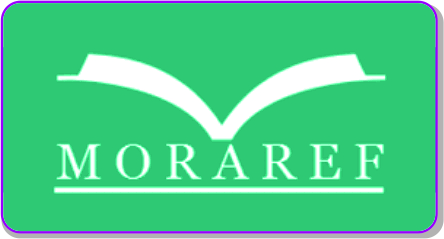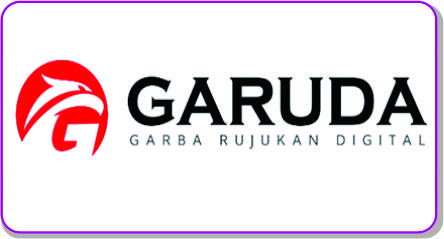Pengembangan Hypothetical Learning Trajectory Berbasis Realistics Mathematics Education Geometri Transformasi pada Topik Rotasi
Authors :
Abstract
The purpose of this research is to produce a Hypothetical Learning Trajectory for geometric transformation material on the topic of rotation using the context of batik motifs and the Ferris wheel game. The research method used is design research. The learning approach used is Realistic Mathematics Education Indonesia (RME). Hypothetical Learning Trajectory (HLT) was developed from learning activities using the context of batik motifs and the Ferris wheel game. The research subjects were three students of class IX SMPN 7 Bukittinggi. Theoretical development was carried out through designing learning activities with HLT design at the preliminary stage, carrying out one to one activities in teaching experiments and retrospective analysis. Data was collected by observation, interviews, and documentation. After the observations were made, the results of the LKPD work were collected which were given to students, interviewed students. The results obtained from the interview process, students can use the HLT design that was developed because it has a systematic guide sequence to teach the topic of geometric transformation about rotation in the one to one implementation. what is predicted and what is anticipated. So the results of the HLT design for geometric transformation materials on the topic of rotation using the context of batik motifs and the Ferris wheel game are obtained.
Tujuan penelitian menghasilkan Hypothetical Learning Trajectory materi transformasi geometri pada topik rotasi menggunakan konteks motif batik dan permainan bianglala. Metode penelitian yang digunakan adalah design research Pendekatan pembelajaran yang digunakan adalah Realisticcs Mathematics Education Indonesia (RME). Hypothetical Learning Trajectory (HLT) dikembangkan dari aktivitas pembelajaran menggunakan konteks motif batik dan permainan bianglala. Subjek penelitian adalah tiga peserta didik kelas IX SMPN 7 Bukittinggi, Pengembangan secara teoritis dilaksanakan melalui perancangan aktivitas pembelajaran dengan desain HLT pada tahap preliminary, melaksanakan kegiatan one to one pada teaching experiment dan restrospective analysis. Pengumpulan data dilakukan dengan observasi, wawancara, dan dokumentasi. Setelah observasi dilakukan maka dikumpulkan hasil pengerjaan LKPD yang diberikan pada peserta didik, mewawancarai peserta didik. Hasil penelitian diperoleh proses wawancara, peserta didik dapat menggunakan desain HLT yang dikembangkan karena memiliki urutan panduan yang sistematis untuk mengajarkan topik transformasi geometri tentang Rotasi pada pelaksanaan one to one menunjukkan bahwa penggunaan konteks motif batik dan permainan bianglala pada desain HLT transformasi geometri tentang Rotasi sesuai antara apa yang diprediksi dan antipasi yang dilakukan. Jadi diperoleh hasil rancangan HLT materi transformasi geometri pada topik rotasi menggunakan konteks motif batik dan permainan bianglala.Keywords
Full Text:
PDFReferences
Alim, J. A., Hermita, N., Sari, I. K., Alpusari, M., Sulastio, A., Mulyani, E. A., Putra, R. A., & Arnawa, I. M. (2020). Development of Learning Flow for KPK Based on Interactive Mul-timedia Assisted RME Based on Students PGSD UNRI. Journal of Physics: Conference Se-ries, 1655, 012045. https://doi.org/10.1088/1742-6596/1655/1/012045.
Andrews-Larson, C., Wawro, M., & Zandieh, M. (2017). A hypothetical learning trajectory for conceptualizing matrices as linear transformations. International Journal of Mathemati-cal Education in Science and Technology, 48(6), 809-829. doi: 10.1080/0020739X. 2016.1276225.
Ayunika, Elisabet. (2011). Pengembangan Hipotesis Trayektori Pembelajaran UntukKonsep Pecahan. Yogyakarta: PendidikanMatematika Universitas Sanata Dharma.
Bluman, A. G. (2012). Elementary statistics: A step by step approach. 8th ed. New York: McGraw Hill.
Bohamonde, D.C, Joan, J.M.F. & Aymemi. (2017). Mathematical modelling and the learning trajectory: tools to support the teaching of linear algebra. International Journal of Mathe-matical Education in Science and Tchnology, 48(3). doi:10.1080/0020739X.2016.1241436
Camci, F., & Tanışlı, D. (2020). Sixth-Grade Students’ Mathematical Abstraction Processes in a Teaching Experiment Designed Based on Hypothetical Learning Trajectory. TED EĞİTİM VE BİLİM. https://doi.org/ 10.15390/eb.2020.8464.
Dawkins, P. C. (2015). Explication as a lens for the formalization of mathematical theory through guided reinvention. The Journal of Mathematical Behavior, Volume 37: 63-82. https://doi.org/10.1016/j.jmathb.2014.11.002.
Fauzan, A., & Diana, F. (2020). Learning trajectory for teaching number patterns using RME approach in junior high schools. Journal of Physics: Conference Series, 1470(1). https://doi.org/10.1088/1742-6596/1470/ 1/012019.
Ekawati, R., Wintarti, A., Abadi, & Kurniasari, I. (2020). Integrating the Hypothetical Learning Trajectory with Realistic Mathematics to In-Service Teachers’ Professional Devel-opment. International Conference on Research and Academic Community Services (IC-RACOS 2019). https://doi.org/10.2991/icracos-19.2020.36.
Faizal Amir, M., Fediyanto, N., Chotimah, C., & Rudiyanto, H. E. (2018). Developing 3Dmetric media prototype through a hypothetical learning trajector to train students spa-tial skill. Journal of Advanced Research in Dynamical and Control Systems, 10(2 Special Is-sue). https://doi.org/10.31227/osf.io/vmk45.
Febrian, F., & Astuti, P. (2018). The RME principles on geometry learning with focus of transformation reasoning through exploration on Malay woven motif. Journal of Turkish Science Education, 15(Special Issue). https://doi.org/10.12973/tused.10254a
Fuadiah, N. F., & Sawitri, Z. A. (2020). A new learning trajectory on the pyramid volume for secondary school. Journal of Physics: Conference Series, 1480(1). https://doi.org/10.1088/1742-6596/1480/1/012028
Gee, E., Fauzan, A., & Atmazaki, A. (2018). Designing learning trajectory for teaching se-quence and series using RME approach to improve students’ problem solving abilities. The 6th South East Asia Design Research International Conference (6th SEA-DR IC), 1088, 1–6. https://doi.org/10.1088/1742-6596/1088/1/ 012096
Gravemeijer, K. (2014). Design research on local instruction theories in mathematics educa-tion. Development of Mathematics teaching: Design, Scale, Effects. Proceedings of Madif 9 (The Ninth Swedish Mathematics Education Research Seminar Umeå).
Huang, R., Zhang, Q., Chang, Y. ping, & Kimmins, D. (2019). Developing students’ ability to solve word problems through learning trajectory-based and variation task-informed instruc-tion. ZDM - Mathematics Education, 51(1). https://doi.org/10.1007/s11858-018-0983-8
Jacob, B. L. (2013). The Development of Introductory Statistics Students' Informal Inferen-tial Reasoning and Its Relationship to Formal Inferential Reasoning. Teaching and Leader-ship - Dissertations. 245. https://surface.syr.edu/tl_etd/245
Larsen, S. P. (2013). A local instructional theory for the guided reinvention of the group and isomorphism concepts. The Journal of Mathematical Behavior, 32(4), 712-725. https://doi.org/10.1016/j.jmathb.2013.04.006
Lemsan, S. C., & House, L. (2012). mproving Mr. Miyagi's Coaching Style: Teaching Data Analytics with Interactive Data Visualizations, CHANCE, 25:2, 4-12. http://dx.doi.org/10.1080/09332480.2012.685362.
Morris, T. & Paulsen, R. 2011. Using Tracing Paper to Teach Transformation Geometry. Jurnal Amesa. ISBN 978-0-620-47379-8. Johannensberg: Amesa, pp 129.
Maulani, F. I., & Zanthy, L. S. (2020). Analisis kesulitan siswa dalam menyelesaikan soal materi transformasi geometri. Jurnal Gammath, 5, 16–25.
Mukasyaf, F., Fauzi, K. M. A., & Mukhtar, M. (2019). Building Learning Trajectory Mathe-matical Problem.
Nickerson, S. D., & Whitacre, I. (2010). A local instruction theory for the development of number sense. Mathematical Thinking and Learning, 12(3), 227–252. https://doi.org/10.1080/10986061003689618.
Solving Ability in Circle Tangent Topic by Applying Metacognition Approach. International Education Studies, 12(2). https://doi.org/10.5539/ies.v12n2p109.
Özdemir, B. G. (2017). Mathematical Practices in a Learning Environment Designed By Re-alistic Mathematics Education: Teaching Experiment About Cone and Pyramid. European Journal of Education Studies, 3(5).
Rollick, M. B. 2009. Toward a Deffinition of Reflection. Jurnal Mathematics Teaching in the Middle School. Vol 7, pp 397.
Safitri Devy, Halini, & Nursangaji, A. (2020). Analisis Kesalahan Siswa dalam Me-nyelesaikan Persamaan Kuadrat di Kelas XI SMAN 5 PONTIANAK. Jurnal Pedidikan Dan Pembelajaran Khatulistiwa, 7(8), 1–6.
Sari, A., & Julianti, B. (2018). Asessing Hyphotetical Learning Trajectory of Mathematics Teachers. Journal Of Teaching And Learning In Elementary Education (JTLEE), 1(1). https://doi.org/10.33578/jtlee.v1i1.5388.
Sembiring, R., S. Hadi and M. Dolk, 2008. Reforming mathematics learning in Indonesian classrooms through RME. ZDM - International Journal on Mathematics Education, 40(6): 927–939.Available at: https://doi.org/10. 1007/s11858-008-0129.
Atikah Sari. (2007). Masalah Kontekstual Sebagai Batu Sendi Matematika Sekolah. Sura-baya: Pusat Sains Dan Matematika Sekolah UNESA.
Suryadi, D. (2013). Didactical Design Research (Ddr) Dalam Pengembangan Pembelajaran Matematika. Prosiding Seminar Nasional Matematika Dan Pendidikan Matematika STKIP Siliwangi Bandung, 1(2).
Taufina, T., Chandra, C., Fauzan, A., & Ilham Syarif, M. (2019). Development of Statistics in Elementary School Based RME Approach with Problem Solving for Revolution Industry 4.0. 5th International Conference on Education and Technology (ICET 2019), 716–721. https://doi.org/10.2991/icet-19.2019.172.
Towe, M. M., & Julie, H. (2020). Developing learning trajectories with the RME of phytago-rean theorem. Journal of Physics: Conference Series, 1470(1). https://doi.org/10.1088/1742-6596/1470/1/012027.
Van den Heuvel-Panhuizen, M., & Drijvers, P. (2020). Realistic mathematics education. S. Lerman (ed.), Encyclopedia of Mathematics Education. DOI 10.1007/978-94-007-4978-8,
Yuliani, R. E., Suryadi, D., & Dahlan, J. A. (2018). Hypotetical learning trajectory to antici-pate mathematics anxiety in algebra learning based on the perspective of didactical situa-tion theory. Journal of Physics: Conference Series, 1013(1). https://doi.org/10.1088/1742-6596/1013/1/012137.
Zulkardi, 2010. How toDesign Mathematics Lessons based on the Realistic Approach?. www.reocities.com/ ratu ilma/rme.html.
DOI: http://dx.doi.org/10.30983/lattice.v1i1.4651
Refbacks
- There are currently no refbacks.
Copyright (c) 2021 Rafki Nasuha Ismail, Ahmad Fauzan, Made Arnawa, Armiati

This work is licensed under a Creative Commons Attribution-ShareAlike 4.0 International License.




Lattice Journal : Journal of Mathematics Education and Applied
Licensed Under a Creative Commons Attribution-ShareAlike 4.0 International License

